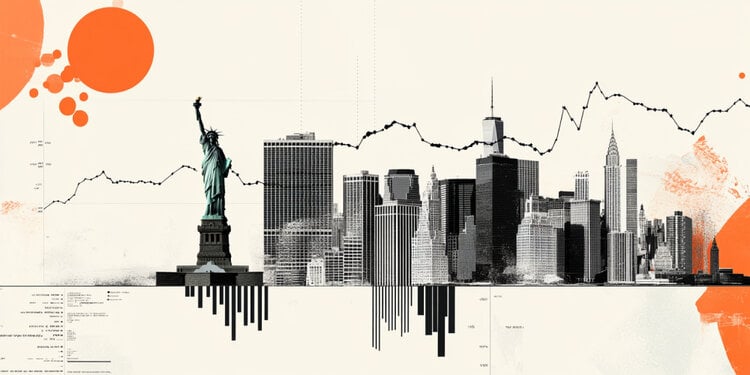- Dow Jones futures point at a negative opening despite the upbeat market mood.
- News of an imminent trade deal with the EU has boosted hopes that the worst trade tariffs can be avoided.
- Upbeat results from Google’s Alphaber boosted tech shares on Wednesday
Wall Street futures anticipate a mixed opening on Thursday, as the enthusiasm about trade deals wears off. Dow Jones futures are trading 0.30% lower at the time of writing, while S&P 500 Index futures trade 0.10% higher and the Nasdaq Index advances 0.3%, pointing to new record highs.
In the trade front, US negotiators are finally reporting some advances on deals with major partners, easing concerns about full-blown trade wars and boosting investors’ appetite for risk in Asia and Europe.
News reports that the US is closing in on a deal with the Eurozone are keeping market sentiment buoyed on Thursday. This agreement would include 15% tariffs, with exceptions for certain products, and comes after a similar agreement with Japan was reached on Wednesday. Beyond that, US Treasury Secretary Bessent affirmed that a second round of trade talks with China would take place next week, contributing to the overall positive sentiment.
Upbeat quarterly earnings have boosted Wall Street Indexes this week
Second-quarter earnings are on the way, bringing positive news so far. About 23% of the S&P 500 companies have reported their results, with 85% of them beating expectations, according to data by LSEG.
On Wednesday, Google’s Alphabet beat expectations after the closing bell, boosted by AI spending. On the other hand, Tesla reported a 23% decline in earnings and signalled harsh quarters ahead.
On the macroeconomic front, US Preliminary PMIs are expected to show that business activity expanded moderately in July. Jobless claims are expected to have grown moderately in the previous week.
Meanwhile, Trump is expected to visit the Federal Reserve on Thursday. With July’s monetary policy meeting around the corner, rumour has it that the President would be seeking to increase pressure on the bank to cut interest rates. The market, however, is practically discarding a rate cut at the next meeting.
Dow Jones FAQs
The Dow Jones Industrial Average, one of the oldest stock market indices in the world, is compiled of the 30 most traded stocks in the US. The index is price-weighted rather than weighted by capitalization. It is calculated by summing the prices of the constituent stocks and dividing them by a factor, currently 0.152. The index was founded by Charles Dow, who also founded the Wall Street Journal. In later years it has been criticized for not being broadly representative enough because it only tracks 30 conglomerates, unlike broader indices such as the S&P 500.
Many different factors drive the Dow Jones Industrial Average (DJIA). The aggregate performance of the component companies revealed in quarterly company earnings reports is the main one. US and global macroeconomic data also contributes as it impacts on investor sentiment. The level of interest rates, set by the Federal Reserve (Fed), also influences the DJIA as it affects the cost of credit, on which many corporations are heavily reliant. Therefore, inflation can be a major driver as well as other metrics which impact the Fed decisions.
Dow Theory is a method for identifying the primary trend of the stock market developed by Charles Dow. A key step is to compare the direction of the Dow Jones Industrial Average (DJIA) and the Dow Jones Transportation Average (DJTA) and only follow trends where both are moving in the same direction. Volume is a confirmatory criteria. The theory uses elements of peak and trough analysis. Dow’s theory posits three trend phases: accumulation, when smart money starts buying or selling; public participation, when the wider public joins in; and distribution, when the smart money exits.
There are a number of ways to trade the DJIA. One is to use ETFs which allow investors to trade the DJIA as a single security, rather than having to buy shares in all 30 constituent companies. A leading example is the SPDR Dow Jones Industrial Average ETF (DIA). DJIA futures contracts enable traders to speculate on the future value of the index and Options provide the right, but not the obligation, to buy or sell the index at a predetermined price in the future. Mutual funds enable investors to buy a share of a diversified portfolio of DJIA stocks thus providing exposure to the overall index.

